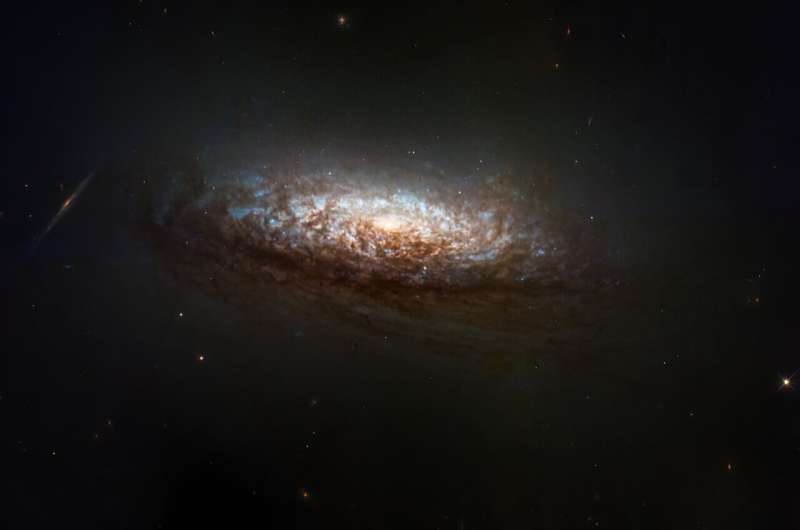This article has been reviewed according to Science X's editorial process and policies. Editors have highlighted the following attributes while ensuring the content's credibility:
fact-checked
trusted source
proofread
NASA releases Hubble image taken in new pointing mode

NASA's Hubble Space Telescope has taken its first new images since changing to an alternate operating mode that uses one gyro.
The spacecraft returned to science operations June 14 after being offline for several weeks due to an issue with one of its gyroscopes (gyros), which help control and orient the telescope.
This new image features NGC 1546, a nearby galaxy in the constellation Dorado. The galaxy's orientation gives us a good view of dust lanes from slightly above and backlit by the galaxy's core. This dust absorbs light from the core, reddening it and making the dust appear rusty-brown.
The core itself glows brightly in a yellowish light indicating an older population of stars. Brilliant-blue regions of active star formation sparkle through the dust. Several background galaxies also are visible, including an edge-on spiral just to the left of NGC 1546.
Hubble's Wide Field Camera 3 captured the image as part of a joint observing program between Hubble and NASA's James Webb Space Telescope. The program also uses data from the Atacama Large Millimeter/submillimeter Array, allowing scientists to obtain a highly detailed, multiwavelength view of how stars form and evolve.
The image represents one of the first observations taken with Hubble since transitioning to the new pointing mode, enabling more consistent science operations. The NASA team expects that Hubble can do most of its science observations in this new mode, continuing its groundbreaking observations of the cosmos.
"Hubble's new image of a spectacular galaxy demonstrates the full success of our new, more stable pointing mode for the telescope," said Dr. Jennifer Wiseman, senior project scientist for Hubble at NASA's Goddard Space Flight Center in Greenbelt, Maryland.
"We're poised now for many years of discovery ahead, and we'll be looking at everything from our solar system to exoplanets to distant galaxies. Hubble plays a powerful role in NASA's astronomical toolkit."
Launched in 1990, Hubble has been observing the universe for more than three decades, recently celebrating its 34th anniversary.
Provided by NASA





















